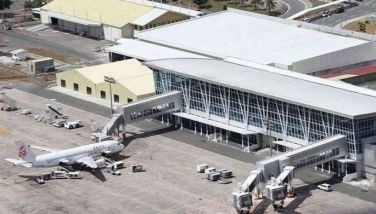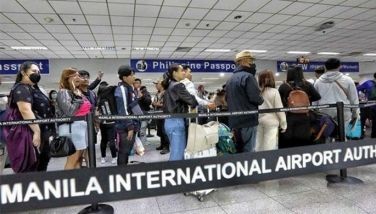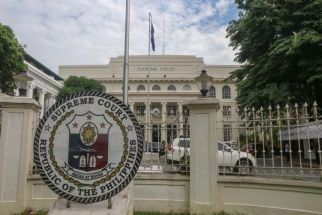Subic: Ecotourism or industrial hub?

Of late, Subic has become a favorite destination of Filipino families looking for a quick weekend or summer getaway from the stressful demands of working and living in a growing metropolis.
The easy drive from Manila via the North Luzon and Subic-Clark-Tarlac expressways is an easy one-and-a-half hour smooth drive over well-paved roads, and the growing tourism-related attractions that have been mushrooming in this free port have become crowd drawers.
The public transportation network itself is as painless, with air-conditioned buses from Manila leaving hourly and arriving in Olongapo City where jeepneys will take visitors to the Subic complex in 10 minutes.
Visitors to this 60,000-hectare complex can get lost in the ecotourism-themed adventures in the forested areas or rivers and beaches. Although not quite like the world-famous Boracay, Subic stands its place as one of the top 10 local tourist destinations in the country.
Interestingly though, while revenues from local tourism has been growing of late, the bulk of its earnings as gleaned from the 2012 annual report of the Subic Bay Metropolitan Authority had been from the core business of the Subic Bay Freeport, particularly the operations of Vale ore transshipment port and the start of commercial operations of phase 2 of the new container port.
Operating loss
It must be noted that the complex operated on a P1.2-billion loss in 2011, posing a burden to the national coffers. However, according to SBMA chairman and administrator Roberto Garcia, Subic managed lately to turn around this negative fiscal position to a profit of P789 million, its highest since operating two decades ago.
So what does this tell us, especially in view of recent conflicts between ecotourism advocates (that are in essence championing a stronger emphasis on promoting Subic as a leisure destination and for extreme environment-based adventures) and by those proposing more industrial projects to be located in the area.
A businessman’s view
One of this column’s readers, Arben Santos, well-known in the shipping industry (and incidentally a member of alumni group that initiated the successful basketball program of five-peat UAAP champion Ateneo Blue Eagles) sent me his thoughts on Subic Bay Freeport’s role in the country, one that will most probably be met with harsh criticism by those who favor ecotourism for the complex.
He says that, “As a businessman, my work entails a lot of travel both here and abroad. As you know, the past few years have seen an influx of foreign investments in the Philippines.
“Since we are an English-speaking nation, and because our labor costs are low, the Philippines is the preferred location for investors who want to build facilities in Southeast Asia. This is the area where investors see growth in the next 10 years due to the rising GNP of Southeast Asian countries.
“In particular, my foreigner friends prefer to invest in Subic and Clark mainly because it is a free trade zone. I am particularly interested in Subic because of its unique advantage of having a deep sea port gently sheltered by a bay, which is ideal for a port.
Ambivalent positioning
“As early as the 1940s, the Americans saw its potential and chose Subic Bay as the location of its naval base. However, our government is ambivalent as to what they want Subic to be: an eco-tourism site or an industrial hub?
“Subic currently has two heavy industry facilities: Keppel and Hanjin shipbuilding facilities. Both facilities are successful projects, and have given thousands of jobs to Filipinos living in the area.
“Subic also has eco-tourism facilities such as yacht clubs, boutique hotels, beaches, wreck diving facilities, dolphin shows and the like. However, if we want to maximize the potential of Subic, the government must decide between making it an ecotourism site or an industrial hub.
“My humble opinion on the matter is that, considering the huge economic gains, Subic must be developed as an industrial hub. Because of its natural deep sea port, it will attract more heavy industries like shipyards, small steel mills, power plants run by LNG, and other industries that use raw materials shipped by sea.
“In the case of tourism, for the sake of argument, we ask, what can we put and what can it offer? It does not have the fine sand of Boracay, or the natural beauty of Palawan. It can’t attract the big hotels because the place is too small, and the tourism area is only in the south side.
“The northern part of Subic is already an industrial hub because of Hanjin and Keppel. The natural advantage of Subic having a deep sea port will not count in tourism. The number of jobs that tourism will create will be much less than that created by heavy duty industry.
Industrial hub
“In terms of revenue and cost of investments, developing Subic as an industrial hub is preferred. There are other places in the country which we can develop into tourism spots like Cebu, Bohol, Palawan, and northern Mindanao.
“Another reason why Subic is attractive to heavy industry is its proximity to Manila. Small parts used by heavy industry can be shipped to Manila and then transported to Subic.
“The government must determine a definitive policy on Subic, and hopefully will transform it into an industrial center, to be marketed aggressively to the international business community, so that it can create jobs.
“Parallel to this, the government should also market our tourism sites in Cebu, Bohol, Palawan, northern Mindanao and the like, if we are to attract tourists to our islands.â€
Economic gateway
Like Arben, I had been attracted to Subic for its potential as an industrial hub that could provide the country with unequalled opportunities in terms of earnings and job opportunities, especially now that investors are seriously looking at the Philippines as a manufacturing zone for re-export to other Asian countries.
The government must make a definitive statement on how it wants Subic to develop in the long term. Clearly, looking at Subic as an economic gateway will turn out to be more favorable for the country.
Facebook and Twitter
We are actively using two social networking websites to reach out more often and even interact with and engage our readers, friends and colleagues in the various areas of interest that I tackle in my column. Please like us at www.facebook.com and follow us at www.twitter.com/ReyGamboa.
Should you wish to share any insights, write me at Link Edge, 25th Floor, 139 Corporate Center, Valero Street, Salcedo Village, 1227 Makati City. Or e-mail me at [email protected]. For a compilation of previous articles, visit www.BizlinksPhilippines.net.
- Latest
- Trending






























